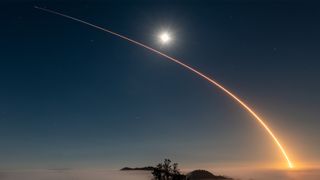
SpaceX will launch 20 Starlink internet satellites from California early Saturday morning (Nov. 9).
A Falcon 9 rocket carrying the Starlink spacecraft — 13 of which have direct-to-cell capability — is scheduled to lift off from Vandenberg Space Force Base on Saturday, during a four-hour window that opens at 1:16 a.m. EST (0516 GMT; 10:16 p.m. Nov. 8 local time).
SpaceX will webcast the launch live via X, beginning about five minutes before liftoff.
If all goes according to plan on Saturday morning, the Falcon 9's first stage will come back to Earth for a vertical touchdown about eight minutes after liftoff on the droneship "Of Course I Still Love You," which will be stationed in the Pacific Ocean.
It will be the 11th launch and landing for this particular booster, according to a SpaceX mission description.
The Falcon 9's upper stage, meanwhile, will continue its trek to low Earth orbit (LEO), ultimately deploying the 20 Starlink satellites there about 60 minutes after liftoff.
SpaceX has already launched more than 100 Falcon 9 missions in 2024, about two-thirds of which have been dedicated to building out the Starlink network.
Get the Space.com Newsletter
Breaking space news, the latest updates on rocket launches, skywatching events and more!
The huge and ever-growing constellation currently consists of about 6,500 active spacecraft, according to astrophysicist and satellite tracker Jonathan McDowell.
Editor's note: This story was updated at midnight ET on Nov. 7 with the new target launch date of Nov. 9. It had been targeted for Nov. 7.
Join our Space Forums to keep talking space on the latest missions, night sky and more! And if you have a news tip, correction or comment, let us know at: community@space.com.

Michael Wall is a Senior Space Writer with Space.com and joined the team in 2010. He primarily covers exoplanets, spaceflight and military space, but has been known to dabble in the space art beat. His book about the search for alien life, "Out There," was published on Nov. 13, 2018. Before becoming a science writer, Michael worked as a herpetologist and wildlife biologist. He has a Ph.D. in evolutionary biology from the University of Sydney, Australia, a bachelor's degree from the University of Arizona, and a graduate certificate in science writing from the University of California, Santa Cruz. To find out what his latest project is, you can follow Michael on Twitter.